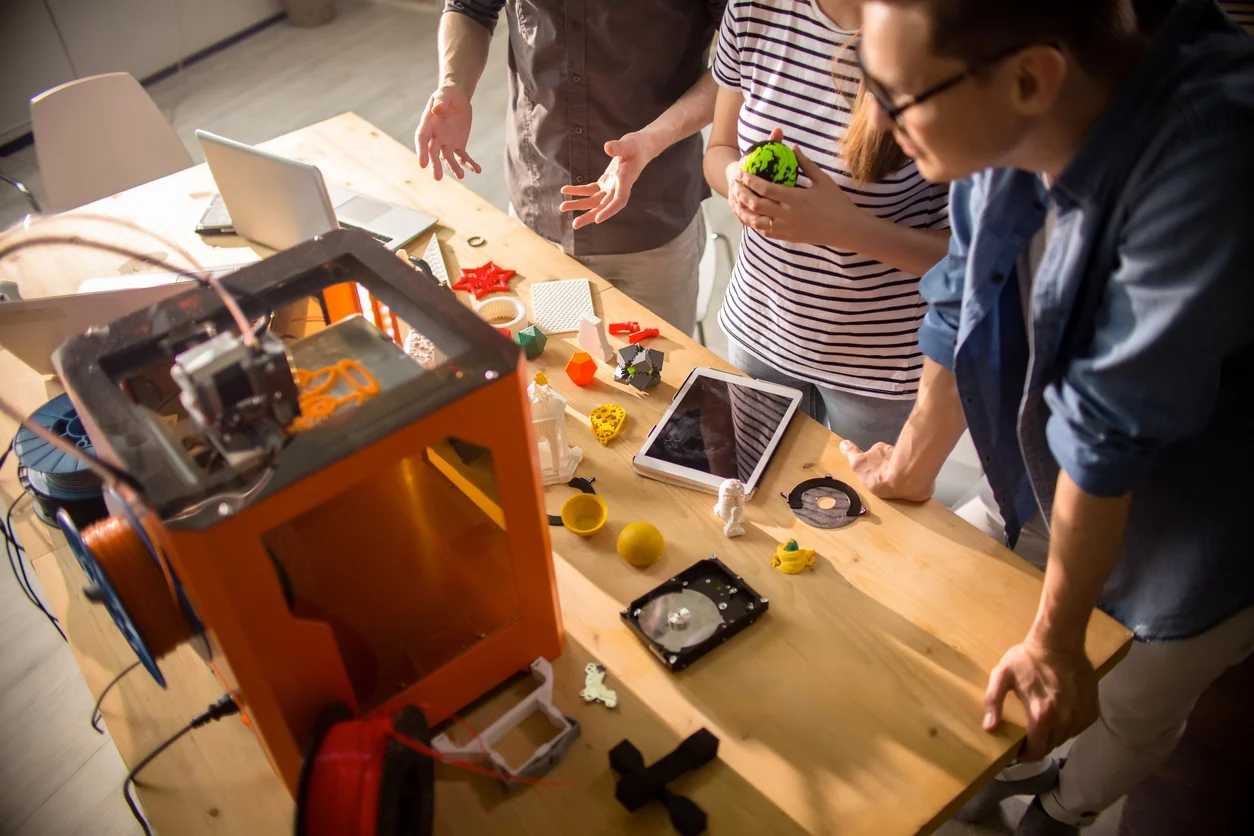3D printers are used in every geographical location by everyone – from factories and R&D departments to hobbyists and startups. The development of various 3D printing technologies has increased the printers’ availability and reduced their cost, but also significantly expanded the possible applications of 3D printing.
Modern 3D printers are no longer just prototyping devices. Various additive technologies are used to create housings, tools, and device parts using plastics, metals, or resin.
See what 3D printers are most often used in production, industry, R&D departments, and home studios of constructors and designers.
Technologies of the most popular 3D printers in the world
If the article we would resist solely based on sales of individual printer models, it would probably only include Fused Deposition Modeling (FDM) models.
This technology based on filament printing is definitely the best known and most widespread. These types of devices are used in R&D departments and designers’ workshops around the world.
At the same time, it is a technology with quite limited application. Due to low production capacity and relatively low print quality (except for high-end devices), FDM is mainly used in prototyping.
However, to take into account other applications of 3D printing, we have included 3D printers that are used on an industrial scale, short-series production, and other specialized applications.
1. Creality Ender 3 (also in the Pro version)
The Creality Ender 3 printer, sold for less than PLN 1,000, is considered the most popular budget 3D printer. Many enthusiasts and hobbyists start with this device, but its satisfactory print quality means that this model is also used in some R&D departments.
As a device designed mainly for hobby use, Creality Ender 3 has a low entry level. The manufacturer even offers dedicated Creality Slicer software, although the device also works with other applications.
The enormous popularity of this series has also led to the creation of a very large and engaged community around it, which has created guides and videos containing tips and ready-made solutions to problems.
The main advantages of Creality Ender 3 are:
- Very low price
- Ease of use
- Open source technology
The main disadvantages of Creality Ender 3 are:
- Low efficiency
- Operating volume
- It may require occasional calibration
2. ELEGOO Neptune 3 Pro
The second printer on the list is the flagship product of the Chinese company ELEGOO, known for its budget devices for every budget. This manufacturer introduced the first devices to the market in 2011 and quickly gained the status of a leading company producing consumer 3D printers.
The Neptune 3 Pro model is currently the second most frequently purchased 3D printer on Amazon.
This device is in many respects similar to the first one on the list, Creality Ender 3. It is also based on FDM technology and has similar dimensions and comparable print quality, but users point out that, despite its purpose, it is not as easy to use and maintain.
The main advantages of Neptune 3 Pro are:
- Good price-quality ratio
- Large user community
- Quiet operation
The main disadvantages of Neptune 3 Pro are:
- Difficult assembly and customization
3. Prusa MK3 or MK3S
Prusa MK3 is an FDM 3D printer created by the Czech company Prusa Research. The printer owes its popularity among both hobbyists and professionals to its very high-quality of prints, ease of use, and reliability.
The device combines great quality, high printing speed, and an accessible interface, but all these advantages translate into the price of the device. This is definitely a higher-end model and may be out of the budget of beginner hobbyists.
The main advantages of Prusa MK3 are:
- High-quality prints
- Very fast printing
- Large, engaged user community and manufacturer support
- Ease of use
- Reliability
The main disadvantages of the Prusa MK3 are:
- High price
4. Anycubic Photon Mono M5s the M5s Pro
Anycubic Photon Mono M5s Pro is a 3D printer based on stereolithography (SLA) technology, which means it uses light-cured resin. These devices offer very high print quality at a relatively low price, especially if we take into account the prices of this type of devices a few years ago.
Another key advantage of Photon M5s is performance and speed. In the case of the Pro model, the manufacturer declares an average printing speed of up to 105 mm/h, which is a very high result in the case of SLA technology.
The main advantages of Anycubic Photon Mono M5s Pro are:
- Very high quality and precision of prints
- High printing speed
- Decent price/quality ratio
The main disadvantages of Anycubic Photon Mono M5s Pro are:
- Limited print space may be insufficient for some projects
5. HP Multi Jet Fusion
HP Multi Jet Fusion is unique on the list because it is based on the original HP technology of hardening layers of polyamide powder using a laser beam.
The second key thing that distinguishes these printers is that they were designed not only for prototyping but also for short-series production and use in production and industry. Parts printed in Multi Jet Fusion are currently used in many industries in the production of format parts, device components, housings for electronic devices and even prostheses.
Due to their intended use, these rather large HP devices enable very precise, high-quality part printing. However, they are very efficient. The latest models can print at a speed of up to 5058 cm3/h.
MJF technology is one of the fastest developing. The manufacturer is constantly expanding printer capabilities in terms of printing speed and the possibility of using various materials and finishes.
The main advantages of HP Multi Jet Fusion are:
- Very high-quality of printed elements
- Availability of various materials and finishes
- High printing speed and the ability to print large sizes
The main disadvantages of HP Multi Jet Fusion are:
- Large dimensions of the device
- High price – the device is intended only for professionals
MJF is the technology we use to produce parts for clients such as Colgate Palmolive or Cortivision. You can read more about this HP Multi Jet Fusion here.
How to choose a 3D printer?
The 3D printer market in 2024 is already largely saturated. Currently, available devices offer various advantages in terms of:
- Endurance
- Aesthetic values
- Production capacity
- Material
- Potential use
Depending on these aspects, the prices of the devices vary, ranging from several hundred dollars to several hundred thousand for printers used in production. Application, therefore, plays a key role when choosing a printer.
The current prices of printers mean that hobbyists will easily find a device within their budget, and designers and constructors can create very high-quality prototypes on modern 3D printers, which will also not consume the entire R&D budget.
However, if the need is to create a larger number of parts, the cost of the device is much higher, not to mention the maintenance of this type of equipment and the implementation of the technology.
That is why, at Cubic Inch, we offer a short-series production service using Multi Jet Fusion 3D printing technology. We provide companies with excellent-quality parts and housings for devices, helping them reduce costs, optimize processes, and implement new devices.


